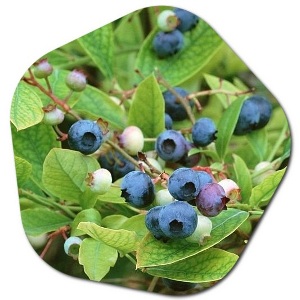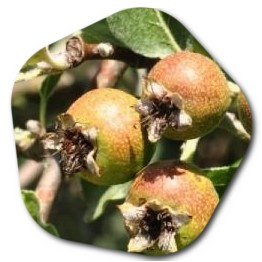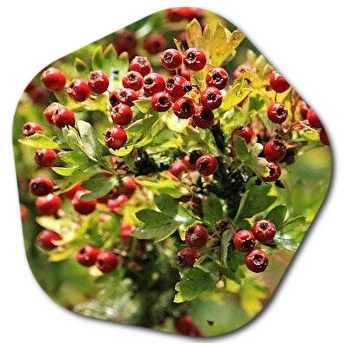What is the fruit of forest trees?
What is the name of a forest fruit? When asked what forest fruits are, grapes, blueberries, raspberries and strawberries come to mind first. Can you eat berries? They taste sweet or sour and are often used in jams, marmalades, compotes and desserts. Forest fruits tend to have a good nutritional profile. They are usually high in fiber, vitamin C and antioxidants. What are blue forest fruits?
These fruits and vegetables contain natural plant pigments called anthocyanins. Fruits such as blackberries, blueberries, cherries, cranberries, cranberries, blackcurrants, black grapes, pomegranates, dried black plums, raspberries, red apples and strawberries fall into this group, while vegetables such as beetroot and eggplant can also be included in the purple-colored dandelion.
What color is forest berry? Its color is dark dark blue, close to black. It grows in rocky areas in the forest. The fruit tree does not shed its leaves in winter. It ripens in August-September. There are several fruit-bearing forest trees that contribute to the biodiversity of forests and provide valuable resources for wildlife and humans alike. Here are some examples of fruit-bearing forest trees:
- Wild Cherry (Prunus avium): Wild cherry trees produce small cherries that are enjoyed by various birds and mammals.
- American Persimmon (Diospyros virginiana): The persimmon tree produces sweet and edible fruits that are consumed by wildlife and humans.
- Pawpaw (Asimina triloba): The pawpaw tree bears large, greenish fruits with a custard-like texture and sweet flavor. It’s native to North America.
- Wild Plum (Prunus americana): Wild plum trees produce small, tart plums that are often foraged by animals and used for making jams and jellies.
- Black Cherry (Prunus serotina): Black cherry trees produce small black cherries that are eaten by birds and mammals.
- Mulberry (Morus spp.): Mulberry trees yield sweet, juicy fruits that come in various colors, including red, black, and white.
- American Elderberry (Sambucus canadensis): Elderberry trees produce clusters of dark purple-black berries that are used in various culinary and medicinal applications.
- Serviceberry (Amelanchier spp.): Also known as Juneberries, serviceberries produce small berries that are sweet and often used in pies and jams.
- Crabapple (Malus spp.): Wild crabapple trees produce small, sour fruits that are sometimes used in cooking and making jellies.
- Hawthorn (Crataegus spp.): Some species of hawthorn trees produce small, berry-like fruits that are consumed by birds and mammals.
- Wild Olive (Olea europaea subsp. oleaster): Wild olive trees produce small olives that are less cultivated than cultivated olive varieties.
- Red Mulberry (Morus rubra): Red mulberry trees produce sweet, dark-purple berries that are relished by wildlife and humans.

These trees play essential roles in forest ecosystems, providing food sources for various animals and contributing to the overall health and diversity of the environment. Additionally, some of these fruits are used by humans for culinary purposes or in traditional medicine practices. Forest fruits >>

Which Forest Trees Give Fruit?
Fruit-bearing wild forest trees are of great importance among the creatures living in the forest. It is very important for the animals living in the forest to eat and not starve. The greatest contribution of fruit-bearing trees is for the protection of wildlife. These trees should not be cut and necessary care should be taken.

- Pyrus elaeagrifolia
The fruit is a lying fruit, 3-4 cm in diameter, globose pear-shaped and juicy, at first green and hairy. when mature it is yellow-brown and hairless. There is a short window. Even if the taste is bitter and the fruit tree is sandy, it can be eaten.
- Mespilus germanica
It is walnut-sized, spherical and brown. It has 5 cores. When immature, the edible part of the fruit is hard and acrid. When ripe, the inside of the fruit becomes puree and has a sweet aroma.
- Prunus domestica
It is a tree that grows up to 10 meters and grows between 20-2000 meters. It grows in all parts of Turkey except the high plateau region of Eastern Anatolia and arid and very hot parts of Southeastern Anatolia. Wild plum (P. domestica), which begins to mature in August, can be eaten until October. The thin skin of the fruits of different shapes and sizes of the plum ripening in different periods are in green, yellow, red and purple colors depending on the species.
- Malus sylvestris
It is a broad-topped tree 8-12 m tall, deciduous in winter. In old trees, the trunk bark is cracked in large layers. Buds, young shoots, both sides of fresh leaves and stems are hairy. The leaves are 4 cm long, 1.2-2 cm wide, elliptical-egg-shaped, and the leaf margin is finely toothed. The flowers that open in May are pink-white in color and 3-6 flowers are found in clusters. The spherical fruit, which is green-yellow in color, 3-5 cm in diameter, matures in September-October and is sour. It is found almost everywhere in Turkey, in clearings in forests, at water heads. Its small fruits are important to wildlife. It is the rootstock of many of the cultivated apples in Europe and Western Asia.
- Prunus avium L.
It can reach 20-25 meters in length, It is a very valuable forest tree that grows in humid and semi-humid areas of our country between 50-1800 meters. Wild cherry (Prunus avium L.) with wide ecological scales is a fast growing deciduous forest tree species naturally found in Europe, North Africa, West Asia and therefore our country.
- Sorbus Sp
Rowan genus; It includes forest trees of different heights (3-25 m.), belonging to the Rosaceae family, deciduous in winter. The flowers are in the form of compound pseudo-umbrellas and the male and female organs are in the same flower.
- Crataegus sp
It is a deciduous tree, mostly tall shrub or 8-10 m tall. Young shoots of brown, green-red color are bare or hairy when fresh. The thorns that give the tree its name are not curved, but straight and singly. The buds are small, roundish. The leaves are 4-5 cm long and have deep 3-7 lobes. The ends of these lobes are bare or double toothed. The upper surface is dark green, the lower surface is blue-green and hairy. The white flowers that open in May form umbrella-like clusters.
- Cornus mas L.
The 1-2 cm long egg-shaped fruit is green at first and bright red when ripe. It has a hard core. The taste is sour and delicious. Are fruits of the forest good for you? >>





